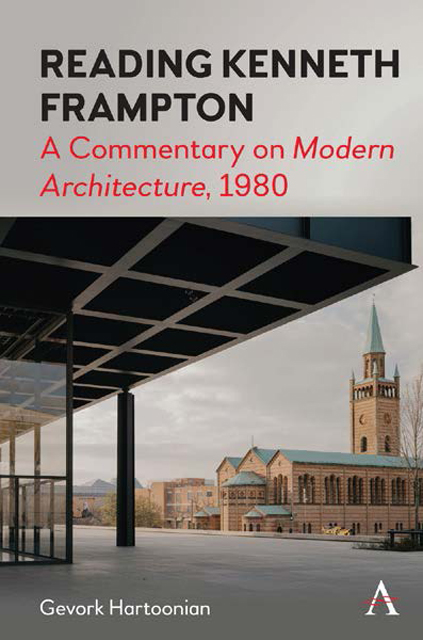4 - In Defense of Architecture
Published online by Cambridge University Press: 09 December 2022
Summary
Even though architecture's engagement with modernization was momentarily interrupted by the outbreak of war in the late 1930s, the sociopolitical outcomes of the war had drastic consequences for the building art. As noted in previous chapters, since the advent of modernity, architecture had to revise its lexicon according to the emerging new building types, most of which had no precedent in the premodern era. This development reached a decisive point in the architecture of postwar years, and Frampton outlines its profile in a chapter of A Critical History (1980) with the telling title “Architecture and the State: ideology and representation 1914–1943.” At stake was, among other issues, architecture's civic purpose under the auspices of a state apparatus, at least in America, the accelerative engine of which left almost no room for ideas such as civitas. Not only was the prospect of returning to the ideals of the Roman Republic shattered a long time ago but the postwar sociopolitical map differed from that of the 1920s and was in many ways colorful like a kilt. By the end of World War II, the thematic of the culture of building, discussed alongside the modernist notion of autonomy, for example, had been redefined. This was not according to the exigencies of a single and coherent totality (res publica) but rather according to diverse sociopolitical and cultural regimes tagged “advanced,” “developing” and “underdeveloped,” each with a specific understanding of the stakes involved in nation-state ideals. The question haunting most committed architects was: to what extent and at what price can architecture and the city be, once again, part of a totality that plans its path to success and failure within a network of decision-making with no constructive role assigned to architecture? Mostly considered as a means toward definitive ends, architecture faced a situation that had the least relevance to its disciplinary history, speaking relatively. Despite the unfavorable conditions of the 1950s, architects and historians did try to reenergize tropes such as civic architecture and monumentality.
Before getting to the bottom of these observations, a few words about the organization of Frampton's book, particularly its general ordering principle and the chapters compiled in part II, are in order.
- Type
- Chapter
- Information
- Reading Kenneth FramptonA Commentary on 'Modern Architecture', 1980, pp. 81 - 104Publisher: Anthem PressPrint publication year: 2022



